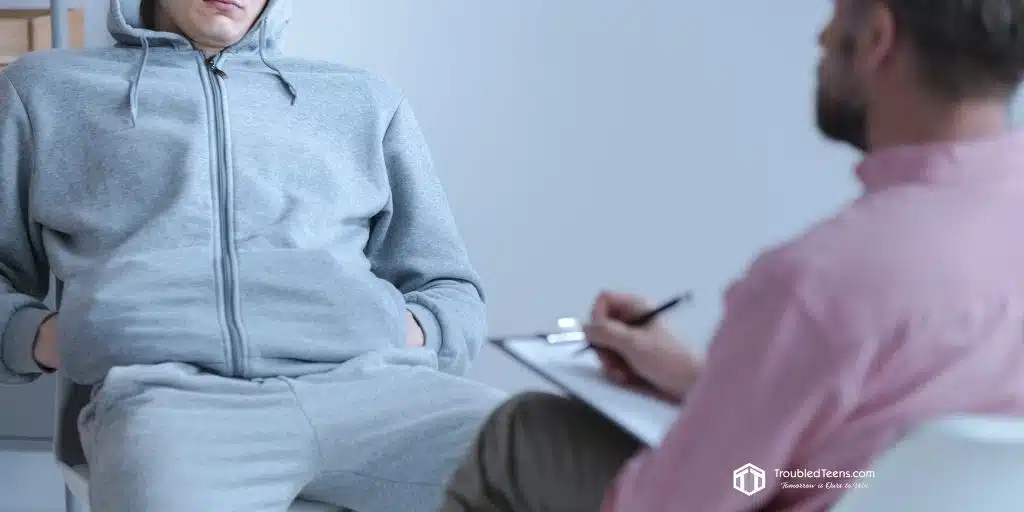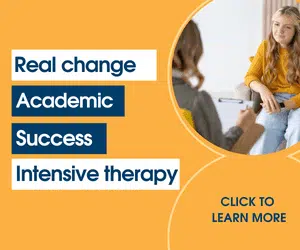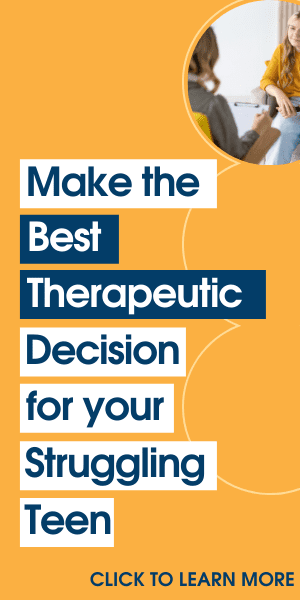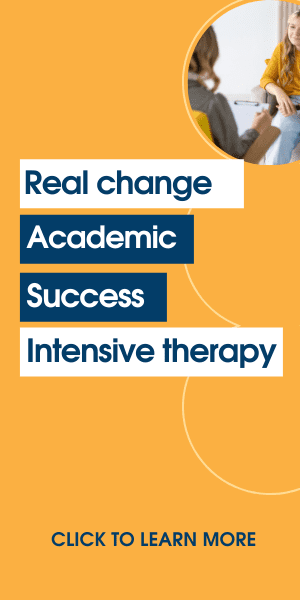Updated on July 19, 2023
If you are a parent of a teen with Obsessive Compulsive Disorder (OCD), you know how challenging and overwhelming this condition can be. OCD is a common mental disorder that affects millions of people all over the world, and it can be especially hard for teenagers who may feel embarrassed and ashamed of their symptoms.
However, with the right support, treatment, and understanding, your teen can learn to manage their OCD symptoms and regain control over their life. In this post, I will share some tips and strategies to help parents support their teens with OCD.
Understanding Obsessive Compulsive Disorder (OCD)
Obsessive-Compulsive Disorder (OCD) has two components: the obsession and the compulsion.
Obsessions are defined as intrusive, persistent and unwanted thoughts, impulses (urges) or images, and are often recognized by the person with OCD as such, but are unable to control them, in spite of knowing that the obsession is not rational or appropriate.
Compulsions are repetitive behaviors that are performed by a person with OCD to reduce the anxiety from the obsession. Some compulsions which may include frequent washing, repeatedly checking, touching, and counting, can differ from person to person.
Simply put, obsessions are thoughts, whereas compulsions are behaviors. OCD symptoms are often mistaken for those of psychosis in troubled teens; however, there is an important distinction: a person with OCD is aware that the source of the thoughts and behavior originates within them whereas someone with psychosis believes that their behavior and thoughts are from somewhere or someone else.
Causes of OCD in Teens
Research finds that irregularities in the parts of the brains of those with OCD that handle regulation and control, specifically the cingulated cortex, orbital frontal cortex and basal ganglia, are factors in developing OCD.
In any given 12-month period, it was estimated that approximately one percent of the general population will have OCD. While about 40 percent of those diagnosed with it in childhood will eventually recover by the time they reach adulthood, the condition is generally more severe in those who develop it as children.
While OCD can affect individuals of all ages, it is particularly prevalent among teenagers. According to Boston Children’s Hospital, 2-3% of children and adolescents have OCD.
Research suggests that it may be:
-
- A hereditary condition more likely to develop if you have someone in your family with OCD or a related mental health condition. 20% of children and teens with OCD have another family member with the same condition.
-
- Imbalances in brain chemistry and functioning have been linked to the development of OCD. For instance, neurotransmitters such as serotonin play a role in regulating mood and anxiety levels, and when these neurotransmitters are disrupted, they can contribute to the onset of obsessive-compulsive symptoms.
-
- Psychological factors like high levels of stress, trauma, or significant life changes can trigger or exacerbate symptoms.
-
- Certain personality traits, such as perfectionism or an excessive need for control, may increase the likelihood of developing obsessive-compulsive tendencies.
Diagnosis of OCD should be made solely by a qualified health professional; never try to self-diagnose as symptoms can be similar to other serious conditions.
Effective Treatments for Obsessive Compulsive Disorder (OCD) in Teens
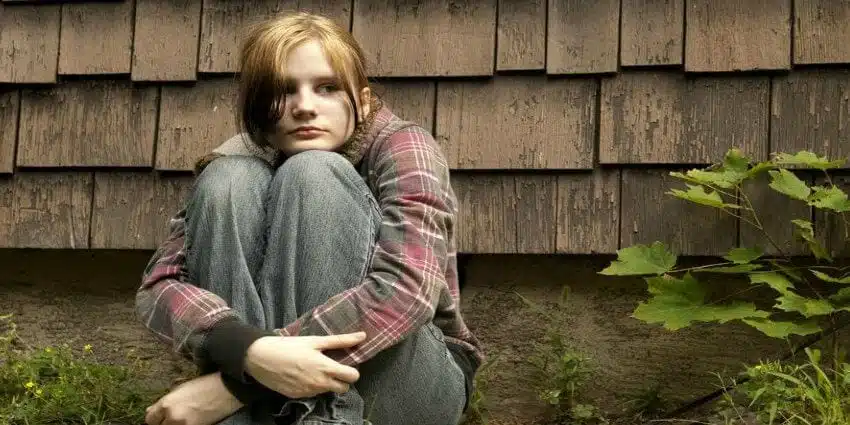
There are a number of effective treatments for OCD, among them, a form of psychotherapy known as CBD (cognitive behavioral therapy), medications, arousal-decreasing techniques, as well as support from the school and community.
CBD – Psychotherapy (“talk therapy”) uses cognitive behavior therapy (CBT) to help the brain gain better control over emotions and thought patterns, thus helping people with OCD change the way they think to overcome obsessions and the ensuing behavior attached to them.
For teens unwilling to see a therapist or admit that there’s a problem, engaging the services of a therapist trained in motivational interviewing techniques can reduce a teen’s negative attitudes about getting help as well as enhance their motivation to change for the better.
Arousal-decreasing Techniques – These include biofeedback, deep-muscle relaxation, meditation, and mindfulness exercises to minimize anxiety’s physical symptoms such as rapid breathing, anxious feelings, or rapid heartbeat.
Exposure and Response Prevention (ERP) – therapy is often utilized as part of the treatment plan for teenagers with OCD. ERP helps individuals confront their fears gradually while resisting the urge to engage in compulsive behaviors. This process allows teens to learn healthier coping mechanisms and gain control over their obsessions.
Medication – Serotonin Specific Reuptake Inhibitors (SSRIs) such as Fluoxetine are often prescribed to patients diagnosed with OCD.
Support from school and community – The school and community at large may be able to offer good resources such as peer support groups, and other assistance lessening the impact of OCD as well as promoting healthier social relationships free from fear.
Overall, early intervention is crucial when treating OCD in teens. Untreated OCD in troubled teens can lead to drugs, alcohol or other undesirable coping mechanisms and impede social and academic success. Getting help early on is the most loving thing a parent can do for their teen.
OCD Treatment Success Story
Sarah, a 17 year old teen with obsessive-compulsive disorder (OCD), struggled for four years with intrusive thoughts and compulsive behaviors that disrupted her daily life. She often found herself trapped in a cycle of repetitive actions, feeling overwhelmed and isolated. However, everything changed when she found effective treatment for OCD.
Through ERP therapy sessions personalized specifically for teenagers with OCD, Sarah learned new coping mechanisms to manage her obsessions and reduce her compulsions. It was not easy, but she gradually regained control over her thoughts and behaviors. Today, Sarah is in college and feels from the constraints of OCD. She says when anxiety is high, she’s learned to step away and refocus. She’s happier and more relaxed now than ever before and thankful to have had an excellent therapist that really understood her.
Obsessive-compulsive disorder can be debilitating for teenagers if left untreated. However, effective treatment provides hope and empowers them to overcome their struggles.” – Dr. John Smith
Supporting a teen with OCD can be challenging, but it is essential to remember that with treatment and support, they can learn to manage their symptoms and live a fulfilling life. As a parent, you can play a crucial role in supporting your teen, by educating yourself about OCD, encouraging treatment, avoiding criticism, creating a supportive environment, and fostering independence and resilience. Remember to be patient, empathetic, and understanding, and together you can overcome the challenges of OCD.
If you or your teen is struggling with OCD, don’t hesitate to seek help. Reach out to a qualified healthcare professional or a mental health specialist who can provide the necessary support and guidance for managing OCD effectively.






